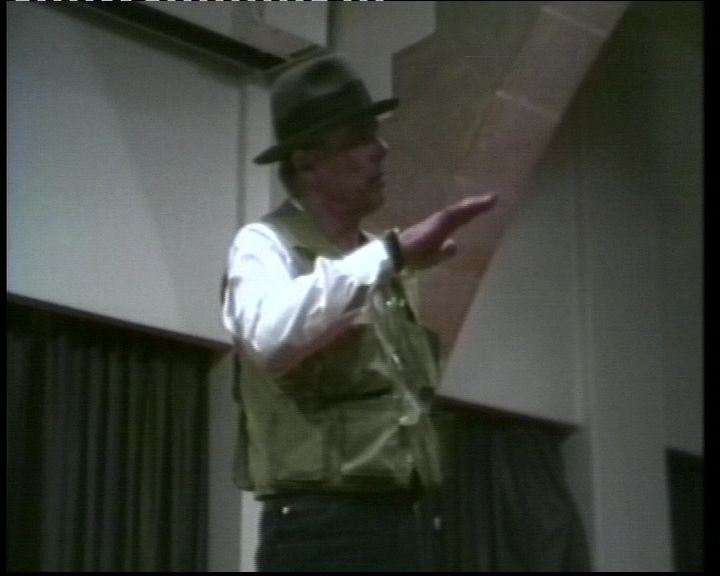Joseph Beuys
Divided between his interest in natural sciences and art, Beuys, as a young man, chose medicine. After enrolling in the army in 1940, he was first an air radio operator and then a pilot. During his years of military service he survived a few accidents that left him with numerous scars. At the end of the war he was interned in a British prisoner of war camp and only after various months in 1945 was he allowed to return to Kleve.
The relationship with his war memories was to become a recurrent theme with powerful symbolic implications, above all in the use of animal fat and felt transformed into true sculpting materials (allegedly after an emergency landing, Beuys was saved by a group of nomad Tartars who covered his body in fat and then in felt).
When he returned from the war Beuys radically changed his projects for the future. He decided to attend the art academy in Düsseldorf, where he studied sculpture. He graduated in 1952.
In the years that followed, he produced a vast quantity of drawings and his interest in various disciplines broadened: philosophy, poetry, literature, and a personal reinterpretation of esotericism and shamanism.
In the early sixties, Beuys began teaching at the Kunstakademie in Düsseldorf during a particular historical moment when the city became a focal point for contemporary art, especially through the Fluxus artists and Nam June Paik, whose performances initiated new fluidity within the already blurred confines among literature, music, visual arts, and performance. In line with this same attitude, Beuys carried out a series of actions and developed ideas regarding the increasingly complex and relevant role art should play in society. His artistic works grew into large and composite installations. He was also interested in developing new contacts with a potentially vaster public by creating art editions and multiples aimed at starting a veritable dissemination consisting in a democratic circulation and spreading of ideas.
Parallel to his artistic activity, Beuys saw the need to continuously commit himself to founding and supporting groups of political activists. The artist formed the Organization for Direct Democracy Through Referendum (1970) and the Free International University (1972), whose interest was the creative potential in every human being. During last years of his life, he was among the founders of the Green Party, and the project of the 7,000 trees planted in Kassel for Documenta 7 bears witness to this.
His profound sense of urgency and his charismatic presence, combined with his openness towards dialogue, reshaped his already unconventional approach to art. This led to international fame, also documented by a noteworthy number of invaluable recorded public meetings and debates. [FB]
List of works
J. Beuys’ Public Dialogue, 1974
by Willoughby Sharp
video, black and white, sound, 120 min. 15 sec.
Castello di Rivoli Museo d’Arte Contemporanea, Rivoli-Torino
Purchased with the contribution of the Compagnia di San Paolo
Recorded at the New School for Social Research in New York, this document is Beuys’ first public event in the United States. The artist presents his theories about art as social sculpture, covering three large blackboards with diagrams and drawings. As the artist continues with his explanations, tension grows among the audience.
A Conversation, 1974
in collaboration with Nam June Paik and Douglas Davis
video, black and white, sound, 34 min.
Castello di Rivoli Museo d’Arte Contemporanea, Rivoli-Torino
Purchased with the contribution of the Compagnia di San Paolo
Centered on a conversation between Beuys, Douglas Davis, and Nam June Paik that took place in 1974 at the Ronald Feldman Fine Arts Gallery in New York, this video illustrates the discussion on the ideas and hopes connected to the possibilities for an artist to use satellite technology. Three years later, for Documenta 6 in Kassel, the artists were to collaborate on the first satellite broadcast.
Willoughby Sharp Videoviews Joseph Beuys, 1975
by Willoughby Sharp
video, black and white, sound, 27 min. 45 sec.
Castello di Rivoli Museo d’Arte Contemporanea, Rivoli-Torino
Purchased with the contribution of the Compagnia di San Paolo
In this portrait/interview by one of the most important critics of the day, Beuys talks about some of his fundamental concepts regarding life, artistic practice, and work.
Documenta 6 Satellite Telecast, 1977
in collaboration with Nam June Paik and Douglas Davis
video, color, sound, 30 min.
Castello di Rivoli Museo d’Arte Contemporanea, Rivoli-Torino
Purchased with the contribution of the Compagnia di San Paolo
During a broadcast shared by twenty-five countries, the performances of Nam June Paik, Joseph Beuys, and Douglas Davis are presented. With live performances in Kassel, Paik and Charlotte Moorman offer some Fluxus classics including TV Bra, TV Cello, and TV Bed. Music and performance—via television video—form the basis of this incredible tribute to global-age communications. Once again from Kassel, Beuys directly addresses the public, explaining his theories of art as “social sculpture.” Finally, Davis from Caracas performs The Last Nine Minutes, a participatory piece in which he uses the space-time distance that separates him from TV viewers.
Dialogue with Audience, 1980
in collaboration with Gianfranco Mantegna
video, black and white, color, sound, 50 min. 19 sec.
Castello di Rivoli Museo d’Arte Contemporanea, Rivoli-Torino
Purchased with the contribution of the Compagnia di San Paolo
This video presents the encounter and discussion held between Beuys and the audience at Cooper Union in New York on January 7, 1980.




